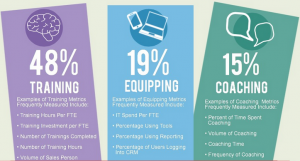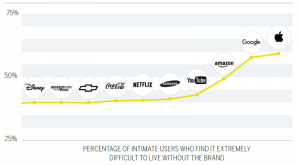What happens when Millennials run the workplace?
That was the question posed in a 2016 New York Times headline. The centerpiece of the article was an employee who worked at a company comprised of Millennials, led by a Millennial CEO. This employee asked for a day off to attend a funeral wake, which was accommodated by the company without hesitation.
Unfortunately, a rather serious problem arose when the employee in question chose to Tweet about his day off. No, he didn’t Tweet about the wake, because there was no funeral. The employee had actually taken time off to…wait for it…build a treehouse.
You just can’t make this stuff up! The wake story, it seems, was a bit of Millennial subterfuge. The CEO, when he learned of the deception, was “sort of taken aback.”
No kidding?
It’s a good question: What in the world is going to happen when these Millennials run the workplace? We can actually put that discussion aside, since they’ve already taken over. They might not be in the majority as leaders, but, as of 2016, they already comprised the largest segment of the workplace, and they have enthusiastically brought their habits, attitudes and technology expertise (some say dependence) along for the ride.
To point out that Millennial habits and attitudes are a bit different than the traditional Boomer manager they work for is a safe bet for understatement of the year. Boomers have been shaking their heads at perceived Millennial shortcomings for quite some time now, and we’ve watched with some fascination as Boomers have scurried off to conferences and keynotes to learn how to “manage Millennials” as though it’s a special pill you can take. Maybe a cheat sheet of some kind?
And that’s why many Boomer managers are failing rather dramatically as leaders. With the historic changes that have occurred in the past 20 years, leaders are left with two very simple choices — adapt or fail.
There really is no middle ground.
The Answer is Actually Quite Simple
Yes, the newer generations of employees are different. Frankly, you need to get over it.
Allow us to summarize the plethora of articles, interviews and books that have been written about what the younger generation wants: to feel valued, to have a sense of purpose (to be part of something bigger than themselves) and to feel like they’re adding value — from Day One on the job.
There’s no magic wand you can wave to make them just like you AND still tap into their performance potential. Sure, you could maintain your command-and-control, you-say-jump-I-ask-how-high brand of leadership and continue to watch your turnover numbers (and bottom line) struggle.
The question is whether or not you will choose to adapt to the differences they bring to the workplace and leverage them to take your organization to the next level.
No, there are no magic tricks to learn. You just need to learn how to be an effective leader, which will impact every employee, not just the younger ones. The fact is leadership isn’t generational, it’s relational, and the sooner you connect with the talent of the youngest generation, the sooner workplace performance — for both you and your team — will improve.
Here are the key areas to focus your time and attention on if you hope to escape the race to mediocrity.
- You must over-communicate.Everything begins with communication. As a leader, especially with the younger generation, you will only be as successful as you are an effective communicator. Communication begins during the talent identification and acquisition process and continues through onboarding, training and coaching. Everything is communicated, and communication is everything!
Communication is not just about what you say, it’s also about how you say it. It includes the things you don’t say. What you do communicates loudest of all, but what you don’t do communicates as well (like when you don’t address performance issues on your team).
As a leader, you must own your words and your actions. The good news is that your ability to be a great communicator is a function of two things very much within your control: intent and effort.
- You must understand the different perspectives.There are wildly different perspectives in today’s chaotic, four-generation workplace. Individuals value different things and prefer different types of recognition and attention. Each generation was raised differently, taught differently, and places different values on different things! Once you understand this, you can take the steps to leverage those differences.
When you actually take the time to understand your people — seeking to understand their perspective on the workplace, the company and the day-to-day challenges they face — you will start to understand why they make those decisions and take those actions. They will stop “coming out of nowhere” and you will begin to value their different points of view, even if you don’t agree.
Need we remind you that you were “different” when you entered the workplace?
- You must own the relationship. Talking about a relationship is one thing; owning the responsibility for that relationship is quite another. That relationship is the difference between engagement and disengagement, and, therefore, the difference between success and mediocrity for your team!
Taking ownership (read accountability) of a relationship starts with setting clear expectations. When you clarify your expectations, you will rapidly reduce the level and frequency of conflict because conflict is simply frustrated expectations. As you do this, engagement will increase and turnover will decrease.
In order to own the relationship, it’s also imperative that you take the time to create a shared vision for what success is and define the path forward. This absolutely includes things that you think everyone should just know. Since the younger generation typical has different definitions for things like respect, loyalty and work, you need to take the initiative to align expectations on those things.
The Answers Are Simple; Change Is Not
Here’s a reality check for you: people join companies, but they quit managers.
Two decades of research have made that clear: A single underperforming manager can be causing a significant drain on your company’s productivity. But, think about what is typically said about employees when they leave your company:
- “They don’t get it.”
- “They just didn’t fit.”
- “I didn’t have time to hold his hand on every project.”
Although those statements may be true on occasion, the most common culprit of poor performance and excessive turnover is the leader, not the employees.
How do we know? Just answer these questions:
- Who hires the employee?
- Who trains the employee?
- Who is responsible to lead the employee?
#awkward
You hire the employees. You train them. And you are the leader. So, if that employee underperforms or is disengaged, whose fault is it? Yes, an individual employee may fail, but if it happens consistently you come face-to-face with reality: You hired the wrong person. Or you trained the employee poorly. Or you are an ineffective leader who failed to develop the worker.
In all three cases, the root cause of the problem is you, the leader.
Ouch.
So, it’s your choice. You can adapt to the realities of the modern workplace, or you can fade into irrelevance. You can change your leadership habits, or the Millennials will be running the workplace sooner than later.
Business & Finance Articles on Business 2 Community(57)
Report Post





